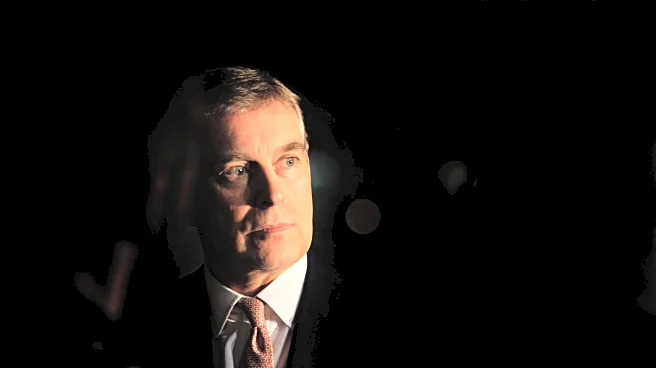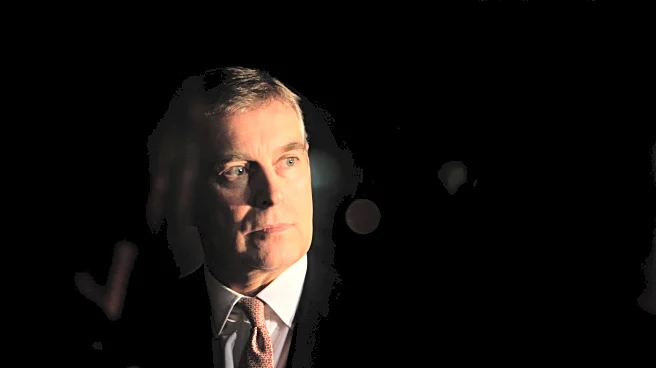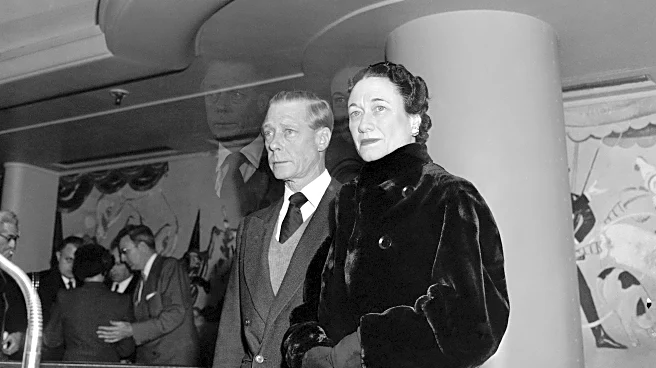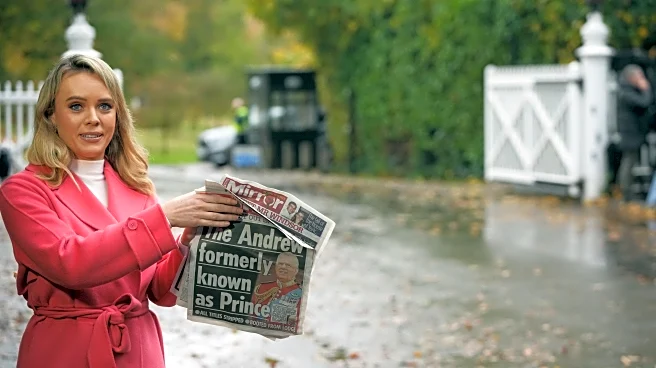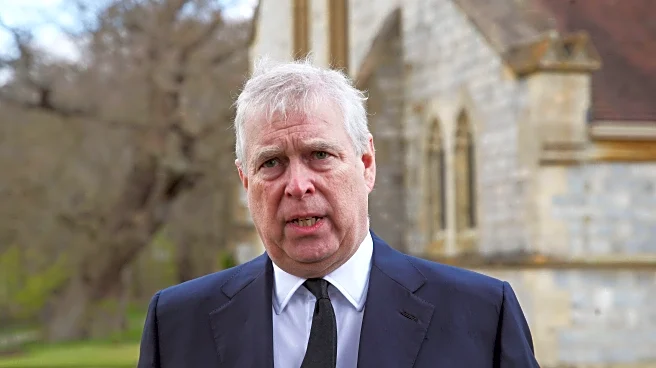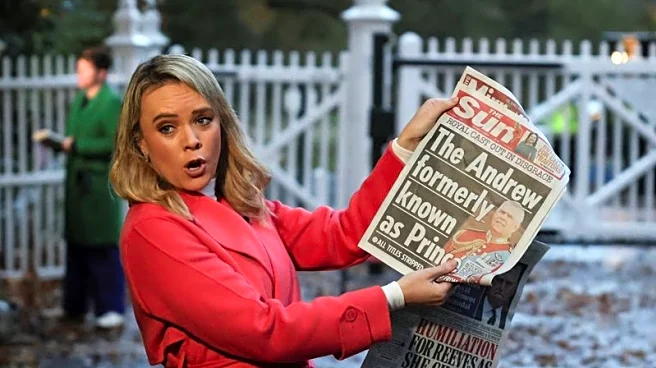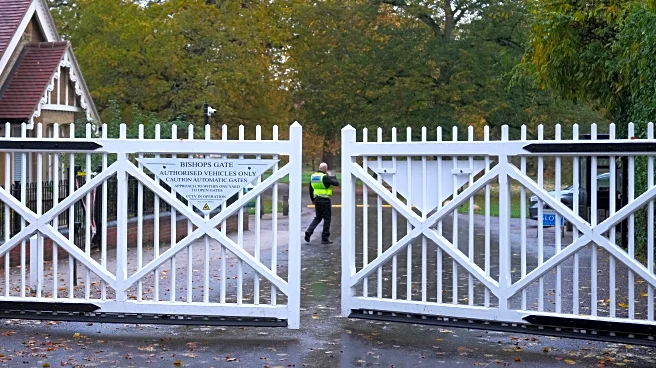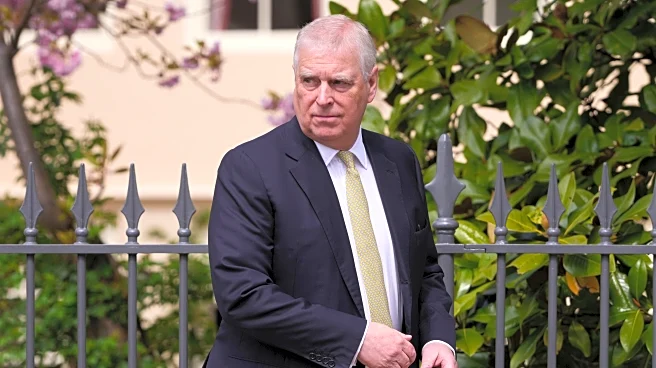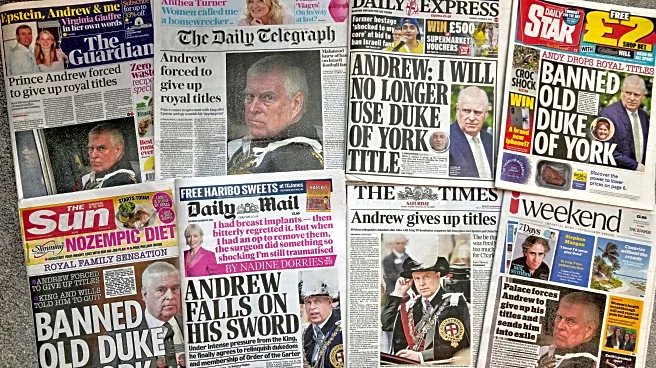LONDON (AP) — Andrew Mountbatten Windsor, the disgraced younger brother of King Charles III, will be banished to his brother's private and remote Sandringham estate — a move that will see him further hidden
from view from a clearly angry British public.
His ejection from the 30-room Royal Lodge on the grounds of Windsor Castle to one of the properties on the king's estate in the east of England will symbolize the downfall of the one-time prince and duke.
Though he's lost his perks of title and status, Andrew, 65, will not be slumming it.
But it is a banishment that leaves Andrew increasingly exposed to scrutiny both in the United Kingdom and the United States over his friendship with the deceased sex offender Jeffrey Epstein. Andrew denies allegations of improper behavior during his long friendship with Epstein, including from Virginia Roberts Giuffre, who claimed she had sex with the ex-prince when she was 17.
Following years of scandals related to Andrew, Charles arguably took the biggest step of his reign on Thursday by seeking to insulate the monarchy from any exposure emanating from Andrew's connections with Epstein, who took his own life in prison in August 2019 while awaiting trial on sex-trafficking charges, more than a decade after his initial conviction.
Andrew has been given notice that his time at Royal Lodge, the mansion near Windsor Castle where he has lived for more than 20 years, is coming to an end. He signed a 75-year lease in 2003 with the Crown Estate, a portfolio of properties that is nominally owned, but not controlled, by the monarch.
He invested a required 7.5 million pounds ($9.9 million) to refurbish the home and now resides there for the annual sum of a peppercorn, a symbolic figure often used to satisfy the legal requirement of real estate transactions.
His move won’t happen overnight. As everyone knows, moving house is an ordeal at the best of times, regardless of the size of the dwelling. It's certainly going to take Andrew, and whoever he can get to help him, a fair chunk of time to go through his belongings, decide what to take, give to charity or what to toss.
There's also the little matter of divvying up possessions with his ex-wife Sarah Ferguson, who has lived with Andrew at Royal Lodge since 2008, but who will not be moving on to Sandringham at Charles' expense.
With Christmas looming, the likely time and effort is no bad thing for a royal family seeking to isolate Andrew. The last thing the 76-year-old monarch, and his son, the heir to the throne Prince William, will want is Andrew within shouting distance on Christmas Day when members of the royal family go to St. Mary Magdalene church on the Sandringham Estate, before what is no doubt a majestic banquet at the king's main residence, Sandringham House, and its 100 or so rooms.
So the expectation is that Andrew will move to his new home in one of the U.K.’s least densely populated counties, after all the festivities have concluded.
The Sandringham Estate is not an official royal residence, which means it's not owned by the state, a fact that Charles will hope will keep a lid on the public's anger. Charles will be funding Andrew's relocation and provide his brother an annual stipend from his own private resources. In effect, Andrew will not live out his vintage years at the expense of the British taxpayer.
Sandringham, the private home of the last six British monarchs, sits amid parkland, gardens and working farms about 110 miles (180 kilometers) north of London. It has been owned by the royal family since 1862, passing directly from one monarch to the next for more than 160 years.
It was recorded in the Domesday Book, the survey of lands in England compiled by William the Conqueror in 1086, as “Sant Dersingham,” or the sandy part of Dersingham. That was shortened to Sandringham in later years.
Queen Victoria bought Sandringham for her eldest son, Edward, in 1862, largely in hopes that becoming a country gentleman would keep the playboy prince out of trouble in the nightspots of London, Paris, Monte Carlo and Biarritz. The future Edward VII transformed the estate into a modern country retreat to be passed on from one generation to the next.
The monarchs since have inherited it — and loved it. Charles was a fan from a young boy, joining shooting parties in the 1950s, with one photograph catching him blowing a miniature hunting trumpet while sitting on horseback.
There is growing speculation that Andrew will not be moving to Wood Farm on the estate, the property favored by his mother, Queen Elizabeth II and father, Prince Philip, who preferred its cosy surroundings to the grandiose main residence.
But there are a number of other properties available, including Park House, the birthplace and childhood home of Diana, Princess of Wales. The late princess continued to live there until the death of her grandfather in 1975.
York Cottage is another possibility. It's where King George V, Andrew's great-grandfather, lived before becoming monarch in 1910.
The cottage, which is not a cottage in the traditional sense given it has multiple bedrooms and a lake nearby, was reportedly earmarked for William's brother, Prince Harry and his wife Meghan Markle, before they decided to ditch their royal lives and go and live in the U.S.
York Cottage, which has often been used as holiday accommodation, may have one problem, though. It does after all share the name of the dukedom that Andrew used to have — a constant reminder of what's transpired.
Another option for Andrew could be Gardens House, which was once home to the estate’s head gardener. It has four bedrooms, three bathrooms and is being used as a holiday let, according to Sandringham’s website.
The Folly, which has been a hunting lodge and a place where ladies enjoyed afternoon tea, would certainly see Andrew downsizing substantially. It only has three bedrooms — but as a single man, does he really need any more?
